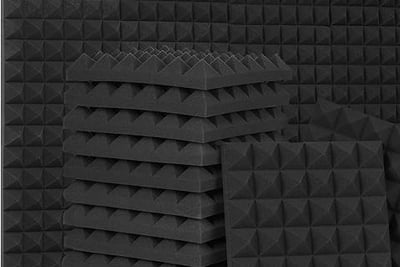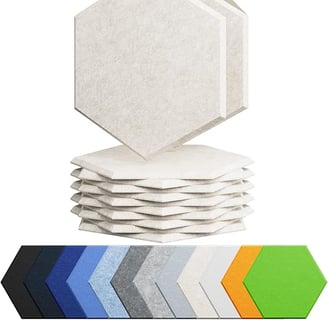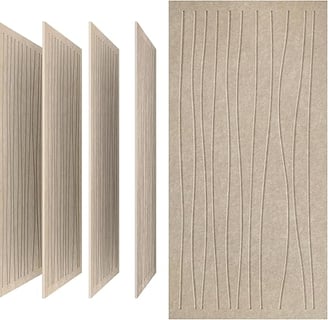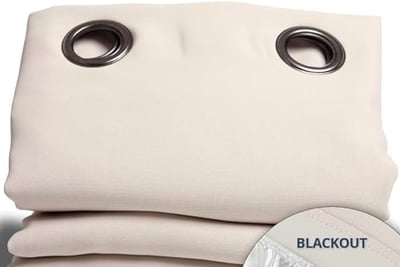How to Soundproof a Room on a Budget
8 min read


Understanding Soundproofing Basics
Soundproofing is a critical component in creating a noise-reduced environment, especially when seeking peace in a bustling world. To begin with, it is vital to differentiate between sound absorption and sound blocking. Sound absorption refers to the process of taking in sound waves, thereby reducing echo and improving acoustic quality. In contrast, sound blocking involves preventing sound from passing through a barrier—such as walls or windows—thus keeping noise from entering or leaving a space. Understanding these fundamental principles is essential for anyone looking to achieve a quieter room.
To comprehend how sound travels, it's important to recognize that it moves through air as pressure waves. When these waves encounter different materials, their behavior changes. For instance, soft materials, such as carpets, curtains, and acoustic panels, are known for their sound-absorbing properties. They effectively capture sound waves, diminishing their reverberance and preventing echoes within a room. On the other hand, hard surfaces, like concrete or drywall, can reflect sound waves, which may lead to increased noise levels.
A thorough awareness of noise sources is crucial for effective soundproofing. Identifying whether the noise stems from external sources, like traffic or construction, or if it originates within the home helps in determining the most suitable soundproofing techniques. Additionally, recognizing the types of soundproofing materials available can greatly enhance the efficacy of DIY projects. Materials such as mass-loaded vinyl, dense foam, and mineral wool, for instance, serve as excellent sound blockers, while carpets and rugs are effective sound absorbers. By leveraging the correct materials and understanding their unique properties, DIY enthusiasts can tackle soundproofing projects on a budget effectively.
Identifying Noise Sources in Your Room
To effectively soundproof a room on a budget, the initial step involves identifying the primary noise sources within your living space. By conducting a thorough assessment, you can determine which areas contribute most significantly to noise disturbances. A systematic approach is essential for prioritizing soundproofing efforts.
Start by evaluating your windows, as they are often a major entry point for external noise. Check for gaps or cracks in the window frame where sound may seep through. If you notice excessive noise from outside traffic, construction, or nearby events, consider sealing these gaps with weatherstripping or using heavy curtains as an acoustic barrier. Additionally, the type of glass in your windows affects sound transmission; double-glazed windows provide better sound insulation than single-pane options.
Next, assess your doors. Hollow-core doors are less effective at blocking sound compared to solid doors. Inspect the area around the door for potential leaks where sound can travel. Installing door sweeps or using draft stoppers can make a noticeable difference in minimizing noise entering from hallways or adjoining rooms.
Walls also play a significant role in sound transmission. Thin or poorly insulated walls may allow sounds from neighboring apartments or rooms to filter in. If you share walls with loud neighbors, consider using wall hangings or acoustic panels to absorb sound vibrations. While extensive renovations like adding insulation might be costly, simpler solutions like installing bookshelves or heavy artwork can significantly reduce noise.
Lastly, don’t forget to examine the flooring. Hard surfaces can amplify noise, particularly if you have unfinished hardwood or tile. Adding area rugs or carpeting can effectively dampen sound, creating a more peaceful environment. By systematically assessing these areas, you can develop a soundproofing strategy that addresses the most disruptive noises in your room.
Affordable Materials for Soundproofing
When it comes to soundproofing a room on a budget, there are several materials available that can effectively reduce noise without breaking the bank. The key is to utilize items that are both affordable and proven to be effective in dampening sound. Below is a list of budget-friendly materials that can help you achieve a quieter living space.
Heavy curtains are a popular choice for soundproofing due to their thickness and density. These curtains can block out a significant amount of noise from outside sources. To maximize their effectiveness, opt for curtains that are specifically labeled as soundproof or acoustic. They can often be found at home goods stores or online retailers at reasonable prices.
Rugs and carpets are another effective way to absorb sound, especially in hard-surfaced rooms. Consider placing large area rugs in areas where sound tends to bounce, such as living rooms or hallways. Thicker rugs will provide better sound insulation. For even greater effectiveness, remember to incorporate a plush underlay.
Acoustic panels are designed specifically for sound absorption and can be a worthwhile investment. These panels can be mounted on walls or ceilings, and they come in a variety of shapes, sizes, and colors to suit different aesthetics. Look for budget options at local building supply stores or consider creating your own panels using materials like foam or insulation.
Additionally, weatherstripping is an inexpensive solution for sealing gaps around doors and windows that allow sound to enter or leave. By applying weatherstripping tape or adhesive foam, you can create a tighter seal and significantly reduce sound transmittance. This material is readily available at hardware stores for a low cost.
By integrating these affordable materials, you can effectively soundproof your room while staying within your budget. Whether sourcing ready-made solutions or opting for DIY fabrication, there are plenty of options to choose from to create a quieter environment.
DIY Soundproofing Hacks
Improving soundproofing in a room doesn't always require professional help or expensive materials. There are several creative DIY solutions that can yield substantial results while remaining budget-friendly. Below are some effective hacks to help you achieve better sound insulation.
One of the simplest yet effective techniques involves repurposing bookshelves as sound barriers. By strategically placing a filled bookshelf against a wall that faces a noisy street or an adjoining room, you can significantly dampen sound traveling through. The denser the books, the better the sound absorption. Moreover, this solution serves a dual purpose, providing both storage and soundproofing.
Another minimalist approach is to hang heavy blankets or quilts on the walls, especially in areas where sound waves are likely to penetrate. To implement this, select thick, heavy fabric and use curtain rods or hooks to attach them securely to the walls. When positioned correctly, these items can absorb sound and reduce echoes, making the environment quieter.
Building homemade acoustic panels is an additional option for those looking to enhance soundproofing. This method involves creating panels using materials like wood frames and insulation foam or even thick fabric. To make these panels, cut the foam to fit inside the frame, then wrap it with fabric to create a visually appealing sound-absorbing panel. Mount these panels on the walls or ceilings to counteract sound reflections, which directly improves sound quality in the space.
Additionally, sealing gaps and cracks around windows and doors can further help soundproofing efforts. Using weather stripping or caulk adds an extra layer of insulation and blocks the sound from sneaking in through these vulnerable points.
These DIY soundproofing hacks offer practical and cost-effective solutions to impede unwanted noise, enhancing the peace and tranquility in your living spaces. Each of these techniques can be implemented with minimal investment and can yield noticeable improvements.
Improving Room Layout for Better Soundproofing
Soundproofing a room on a budget involves various strategic measures, including optimizing room layout. A well-thought-out arrangement can significantly reduce noise transfer and enhance acoustic comfort. One effective way to achieve this is by using large pieces of furniture to create barriers against sound. For instance, placing bookshelves, cabinets, or heavy sofas against shared walls can absorb and block sound waves from entering or exiting the room. This tactic not only adds to the aesthetics of the space but also functions as an effective noise-canceling solution.
Another important consideration is the arrangement of the furniture in a way that minimizes noise reflection and transmission. Instead of having furniture positioned against the walls, consider creating a floating layout where seating or other elements are placed away from walls. This design disrupts the path of sound, helping to absorb vibrations that would typically resonate through the room. Additionally, employing rugs and curtains can further dampen noise levels, as they both act as sound insulators.
Creating distinct zones within a room can also be beneficial for soundproofing purposes. By delineating areas with different functions—such as a work zone separated from a relaxation space—you minimize the likelihood of noise spillover. For example, using room dividers or furniture arrangements to create a separate study nook can not only enhance focus but also serve as a sound barrier. Visual examples of this could include furnishing a home office area with tall plants or translucent screens, which can provide both privacy and acoustical benefits.
By thoughtfully improving your room layout, you can effectively contribute to a soundproof environment without overspending. Implementing these strategies enhances your living space, making it not only quieter but also more functional and aesthetically pleasing.
Sealing Gaps and Cracks
To effectively soundproof a room, addressing gaps and cracks in walls, floors, doors, and windows is paramount. Sound travels through air and structural materials, making any unsealed openings potential conduits for noise pollution. Even the smallest gaps can significantly diminish the overall soundproofing effectiveness of a space. Therefore, a comprehensive assessment of your room for these imperfections is the first step toward achieving a quieter environment.
One of the simplest and most cost-effective methods is using caulk. This flexible material is suitable for sealing gaps around window frames, doorframes, and baseboards. Applying a bead of caulk can not only help to insulate your room but also create a more airtight seal to diminish the transmission of sound. It’s essential to choose a high-quality acoustical caulk, which is specifically designed for soundproofing purposes, providing better results than standard caulk.
In addition to caulk, expanding foam can be utilized for larger voids, such as gaps in walls or around plumbing. This type of foam expands upon application, filling in the gaps to create an effective barrier against sound. However, caution must be exercised during installation, as excessive use can lead to structural issues over time. It is advisable to keep the application controlled and to follow the manufacturer's instructions closely.
Weatherstripping tape serves as another viable solution, particularly for doors and windows. By applying this material along the edges, you can significantly reduce the passage of noise while also improving energy efficiency. Weatherstripping comes in various materials, including foam, vinyl, and felt. Selecting the right type based on your specific needs will enhance the overall soundproofing effect. By taking these straightforward measures to seal gaps and cracks, you can establish a quiet retreat within your home and enhance your overall soundproofing efforts.
Evaluating Your Progress and Making Adjustments
Once you have implemented various soundproofing techniques in your room, it is essential to evaluate their effectiveness. This assessment allows you to identify any lingering noise issues and provides a pathway for further improvements. Begin by conducting sound tests; this could involve playing audio at a consistent volume and noting how much sound penetrates into or out of the space. Consider using a decibel meter or audio recording applications available on smartphones to quantify sound levels accurately. By measuring the decibels before and after soundproofing, you can determine the exact impact of your DIY solutions.
Pay particular attention to the areas where noise persists. It is common to find that some methods have worked better than others, often depending on the type of noise and its source. For example, if low-frequency sounds, like bass from music or vibrations from appliances, are still noticeable, you may need to consider adding mass or density to your walls, floors, or ceilings. This could involve using additional soundproofing panels, thicker curtains, or more substantial rugs. High-frequency sounds, on the other hand, might be mitigated by better sealing gaps or employing sound-absorbing materials.
Additionally, regularly re-assessing your space can be beneficial, especially as life circumstances or noise sources change. As time goes on, your soundproofing requirements may evolve, necessitating further adjustments or enhancements. If after taking these measures the noise level remains unacceptable, it may be time to consult with a professional for more advanced soundproofing solutions. Remember, effective soundproofing is often an ongoing process that requires periodic evaluations and adaptations to achieve the best results tailored to your specific needs.











